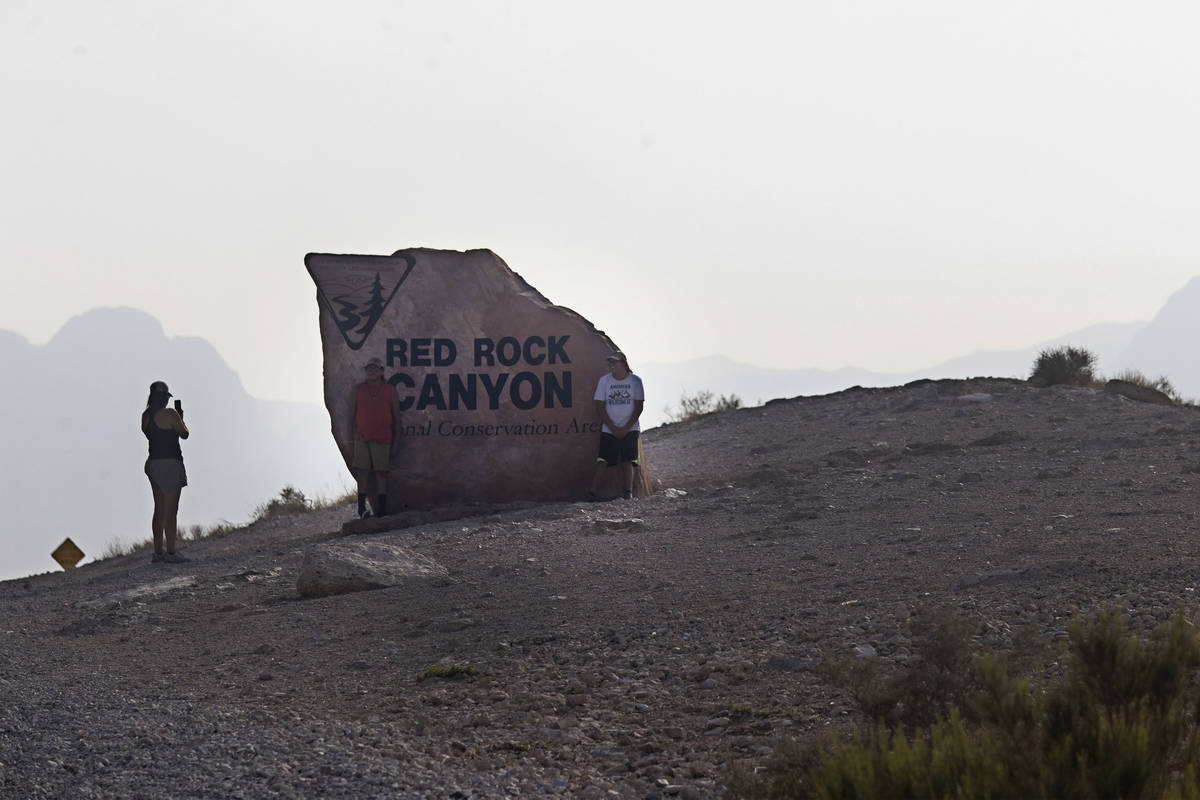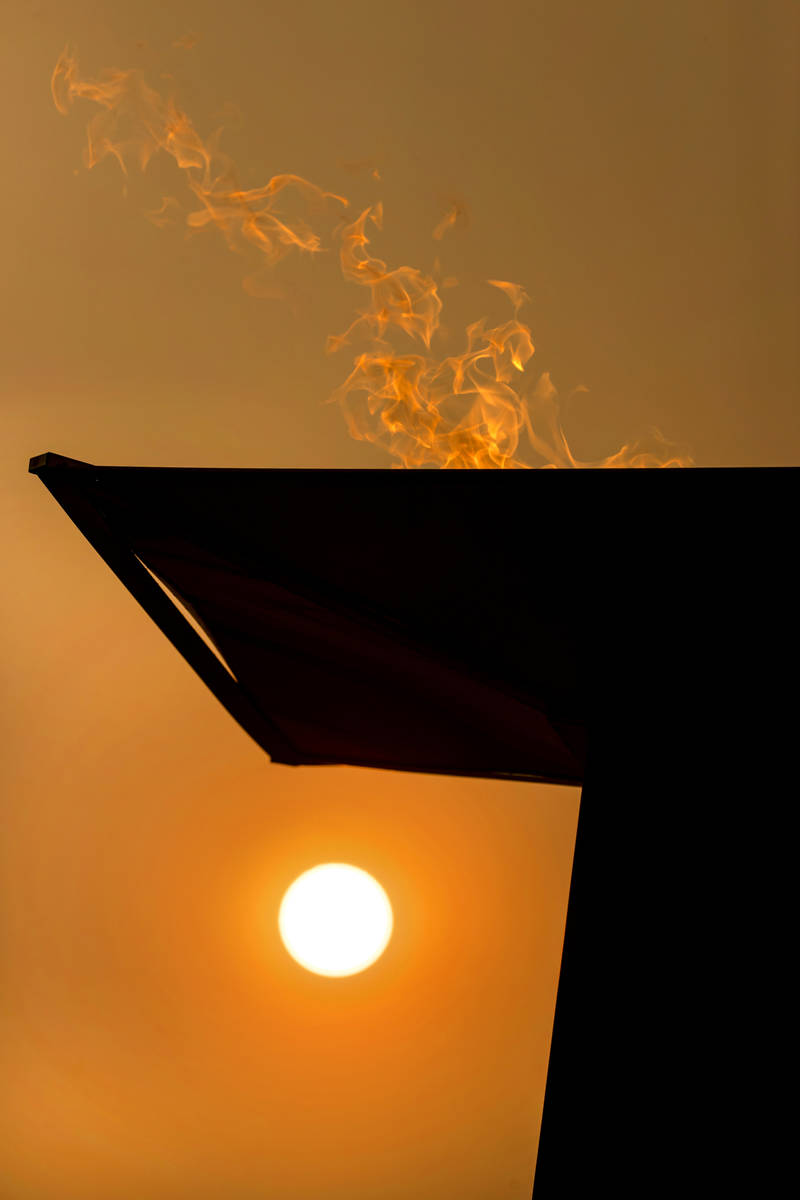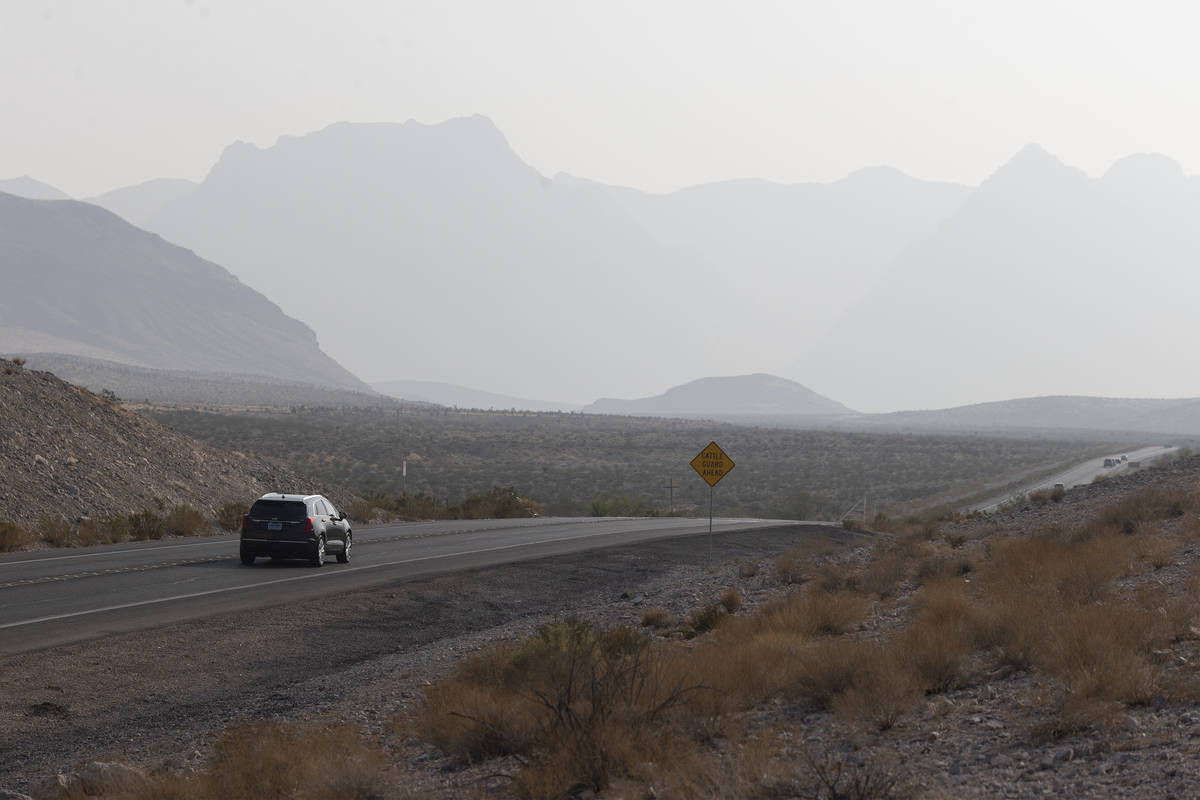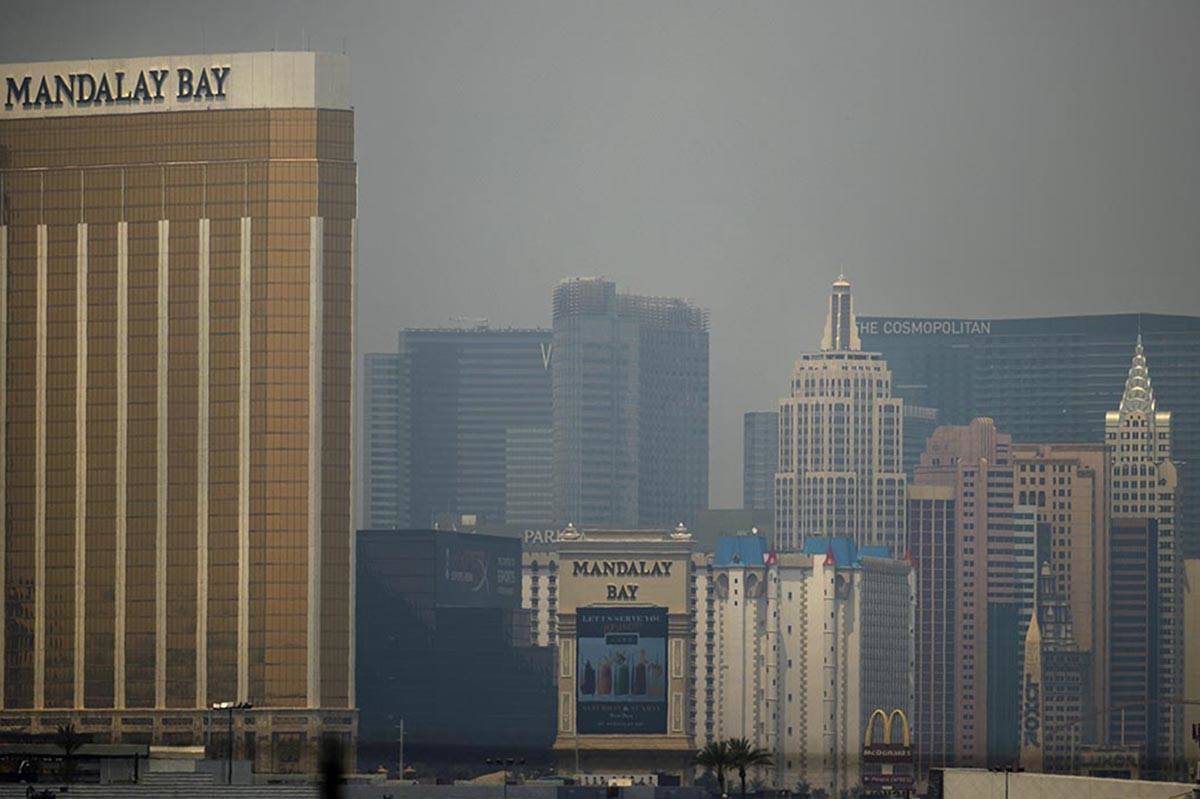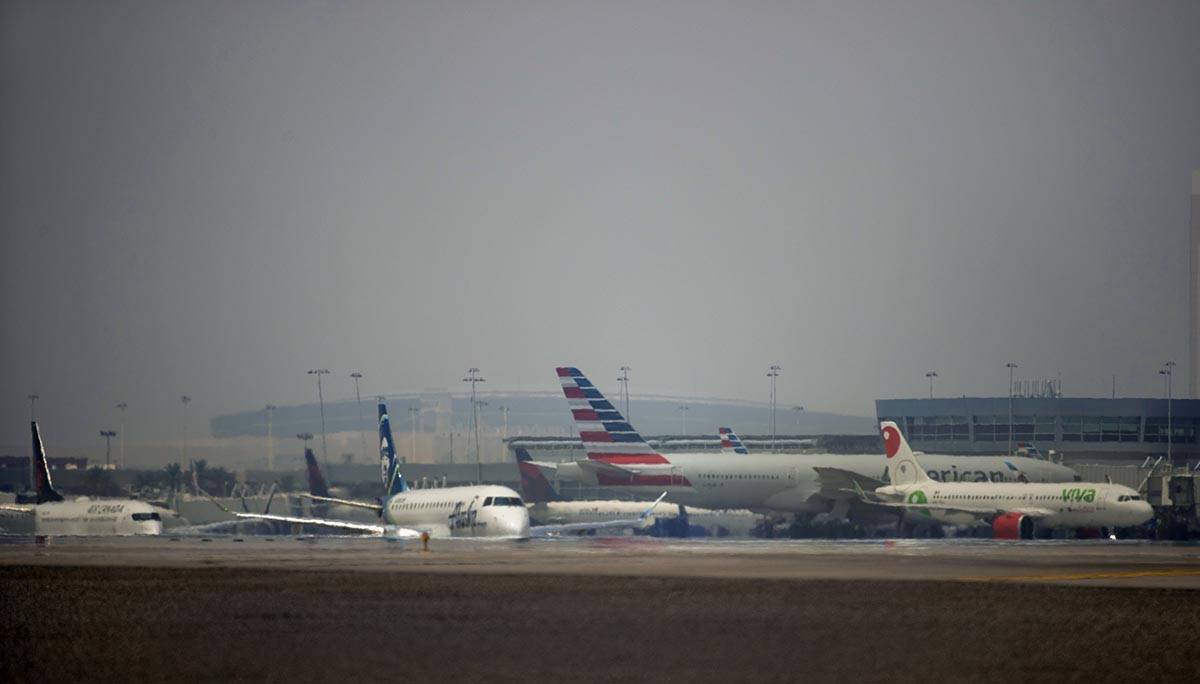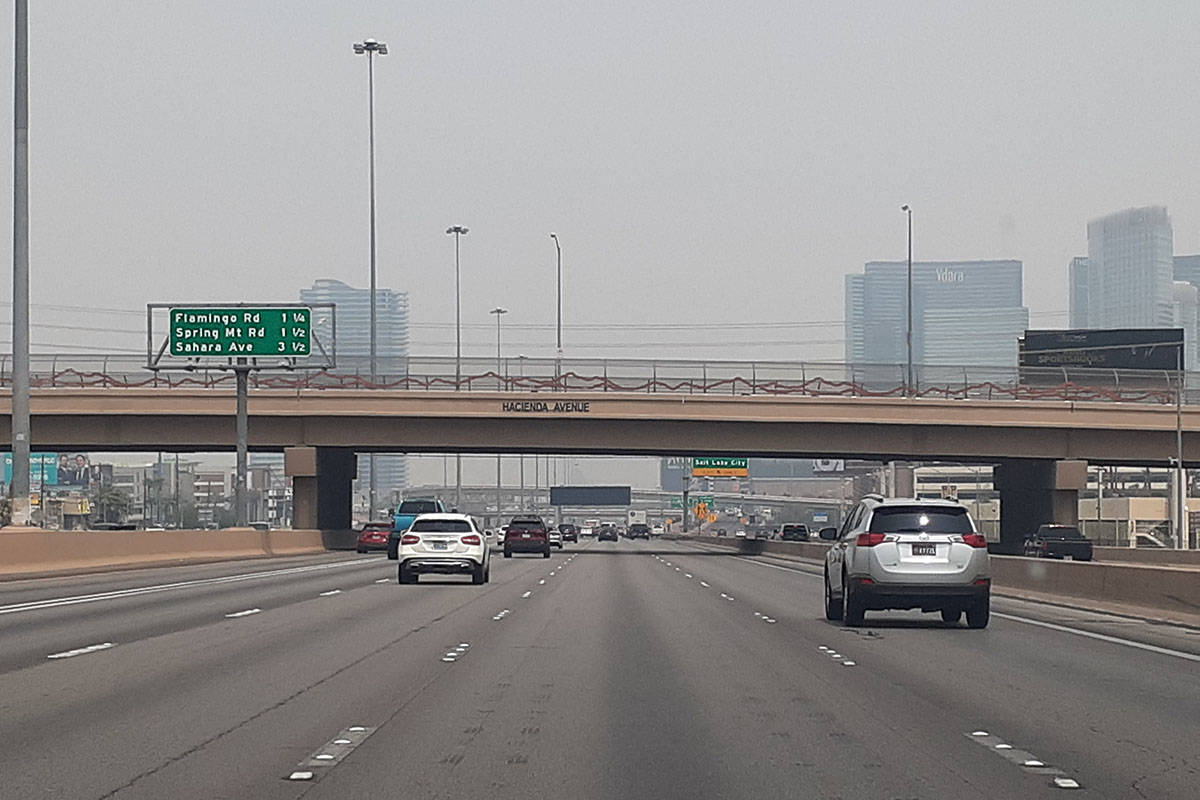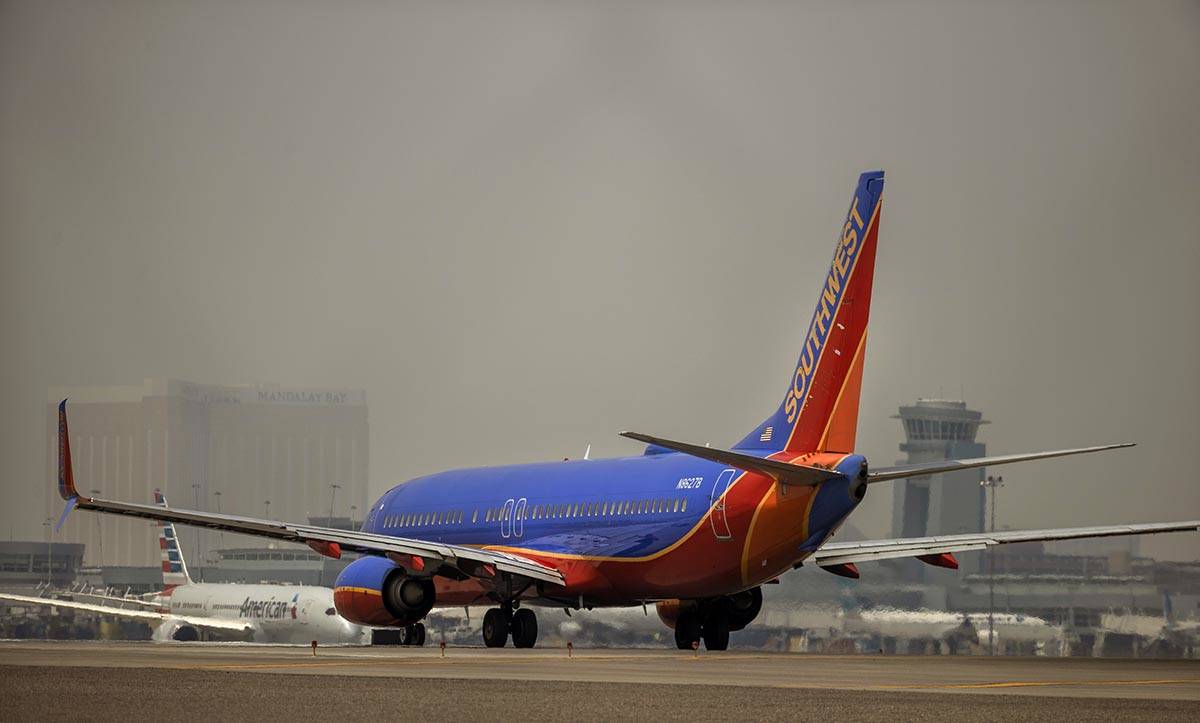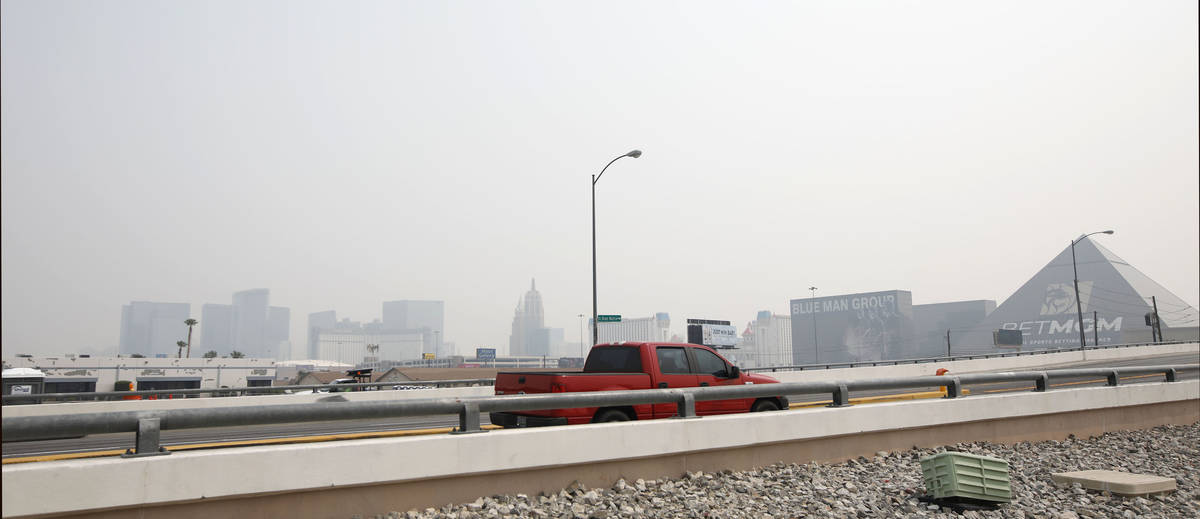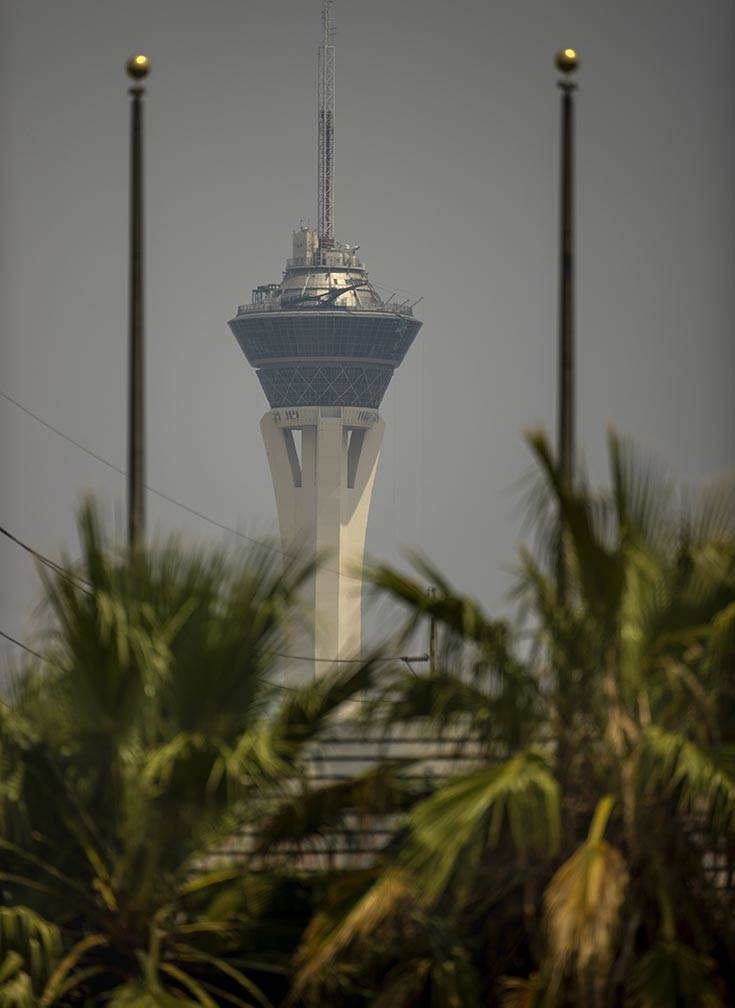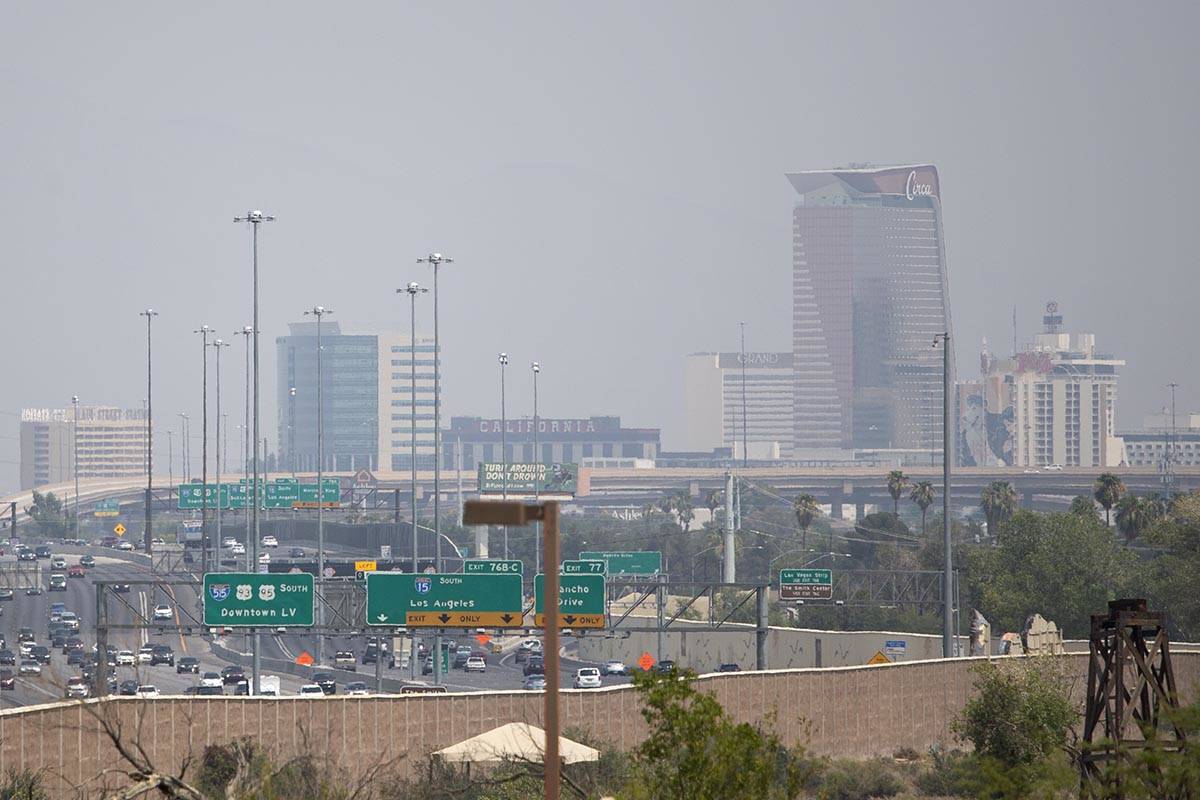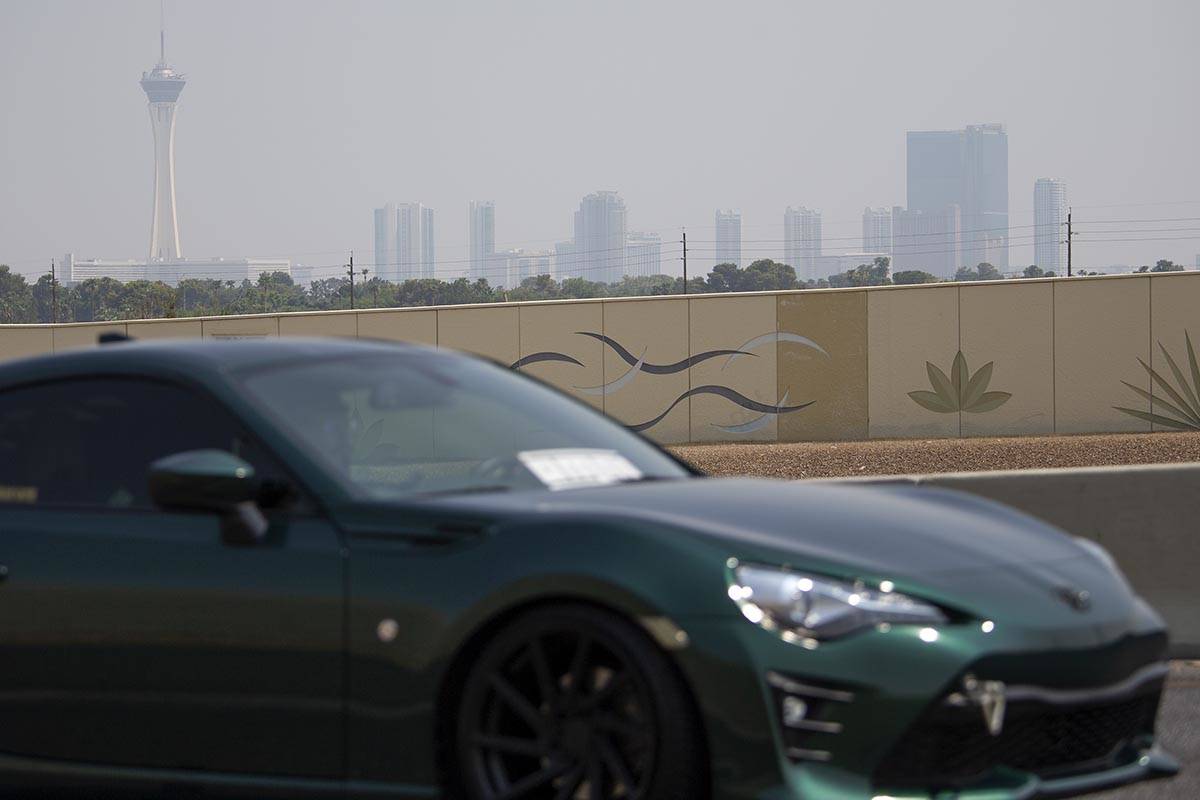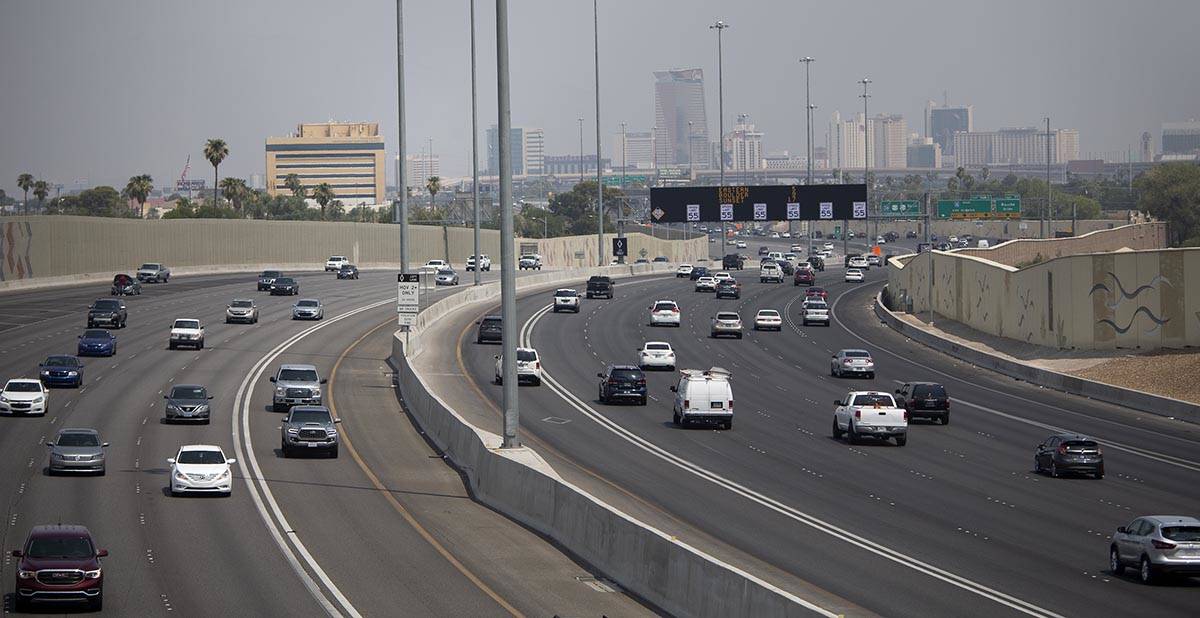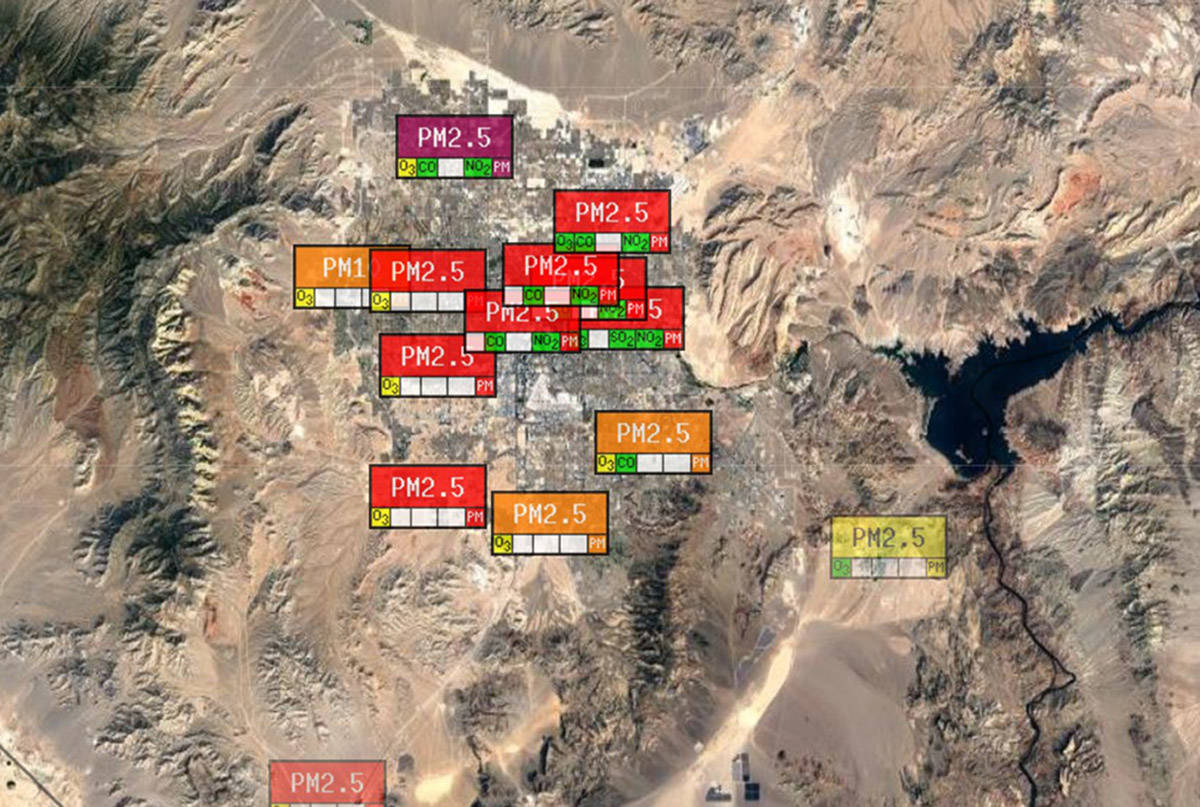Unhealthy Clark County air quality alert extended through Sunday
Air quality in most of metropolitan Clark County was rated unhealthy to very unhealthy Saturday afternoon because of smoke from Northern California wildfires moving into the region.
Clark County air quality monitoring sites across the Las Vegas Valley showed heavy amounts of ozone and particulate matter in the sky, meaning people should avoid any prolonged outdoors exposure. People who are sensitive to pollutants and children or older adults should avoid being outdoors.
Boulder City was the only monitoring site that had an air quality rating of moderate. All others ranged from “unhealthy for sensitive groups” to “very unhealthy.” No sites had air rated as “hazardous,” the worst possible rating.
We are extending our #VegasAirQuality smoke-ozone ALERT thru tomorrow. According to @NWSVegas, CA wildfire smoke will spread along & north of I-15 tonight & Sunday morning. If you have breathing sensitivities, another day indoors is in order. For more: https://t.co/i3A5h0Ut8p. pic.twitter.com/aEtBbB9Bxt
— Environment & Sustainability (@SustainClarkCty) August 8, 2021
Smoke and haze weren’t expected to be extreme factors, according to the National Weather Service, but the Clark County Department of Environment and Sustainability issued an alert Saturday morning for smoke and ozone.
The alert was extended Saturday evening to include Sunday. The weather service said it expects increased pollutants to be present until at least Monday.
The smoke and haze began moving into the northwest valley Friday afternoon, meteorologist Brian Planz said.
“The I-15 corridor looks like it will be the dividing line between haze in the northwest and lighter conditions southeast of that,” Planz said. “We are not expecting anything real thick.”
That outlook changed with smoke and widespread haze expected to be in the area into Monday, according to the latest weather service forecast.
Particulate matter issues
Most of the pollution is in the form of particulate matter, according to the monitoring sites. Most also showed ozone levels were unhealthy for sensitive groups of people, such as those with asthma, and for younger and older residents.
“Particle pollution (also called particulate matter or PM) is the term for a mixture of solid particles and liquid droplets found in the air,” the county’s air quality website states. “Some particles, such as dust, dirt, soot, or smoke, are large or dark enough to be seen with the naked eye. Others are so small, they can only be detected using an electron microscope. Particle pollution includes inhalable coarse particles, with diameters larger than 2.5 micrometers and smaller than 10 micrometers and fine particles, with diameters that are 2.5 micrometers and smaller. How small is 2.5 micrometers? Think about a single hair from your head.”
Most of the sites were reporting unhealthy air quality for particulate matter for fine particles. Under such conditions, people with respiratory issues such as asthma as well as younger and older people should avoid prolonged exposure outdoors.
On Saturday afternoon, a Summerlin monitoring site was showing an unhealthy reading for coarse, or larger, particulate matter.
Visibility drops
The smoke dropped visibility from the usual 10 miles down to 2 miles in some locations, weather service meteorologist John Adair said.
“The models we use for smoke do show in still lingering into Monday,” Adair said. “The winds are fairly light, so it’s not going to disperse much.”
Some clearing might occur Saturday overnight, but more smoke and haze is expected on Sunday.
“Some of it is forecast to come in from Bakersfield on Sunday morning,” Adair said. “It may not be as dense as today, but smoke from the same fires has moved into the central California valley, and winds will bring it toward Las Vegas. Same fire smoke, just through the back door.”
Research on wildfire smoke link to COVID-19
A 2020 study of wildfire smoke was linked to a “substantial increase” in the COVID-19 positivity rate in Reno, according to new research from the Center for Genomic Medicine at the Desert Research Institute, the Washoe County Health District, and Renown Health.
“The DRI-led study found a 17.7 percent rise in COVID-19 cases after a prolonged 2020 wildfire smoke event in Reno,” wrote DRI communications manager Detra Page in an email to the Las Veags Review-Journal. “Wildfire smoke may greatly increase susceptibility to SARS-CoV-2, the virus that causes COVID-19.
In a study published in the Journal of Exposure Science and Environmental Epidemiology, the research team set out to examine whether smoke from 2020 wildfires in the Western U.S. was associated with an increase in SARS-CoV-2 infections in Reno.
“To explore this, the study team used models to analyze the relationship between fine particulate matter (PM 2.5) from wildfire smoke and SARS-CoV-2 test positivity rate data from Renown Health, a large, integrated healthcare network serving Nevada, Lake Tahoe, and northeast California. According to their results, PM 2.5 from wildfire smoke was responsible for a 17.7 percent increase in the number of COVID-19 cases that occurred during a period of prolonged smoke that took place between Aug. 16 and Oct. 10, 2020.
“Our results showed a substantial increase in the COVID-19 positivity rate in Reno during a time when we were affected by heavy wildfire smoke from California wildfires,” said Daniel Kiser, co-lead author of the study and assistant research scientist of data science at DRI. “This is important to be aware of as we are already confronting heavy wildfire smoke from the Beckwourth Complex fire and with COVID-19 cases again rising in Nevada and other parts of the Western U.S.”
Reno was exposed to higher concentrations of PM2.5 for longer periods of time in 2020 than other nearby metropolitan areas, including San Francisco. Reno experienced 43 days of elevated PM2.5 during the study period, as opposed to 26 days in the San Francisco Bay Area.
“We had a unique situation here in Reno last year where we were exposed to wildfire smoke more often than many other areas, including the Bay Area,” said Gai Elhanan, M.D., co-lead author of the study and associate research scientist of computer science at DRI. “We are located in an intermountain valley that restricts the dispersion of pollutants and possibly increases the magnitude of exposure, which makes it even more important for us to understand smoke impacts on human health.”
Contact Marvin Clemons at mclemons@reviewjournal.com. Follow @Marv_in_Vegas on Twitter.



